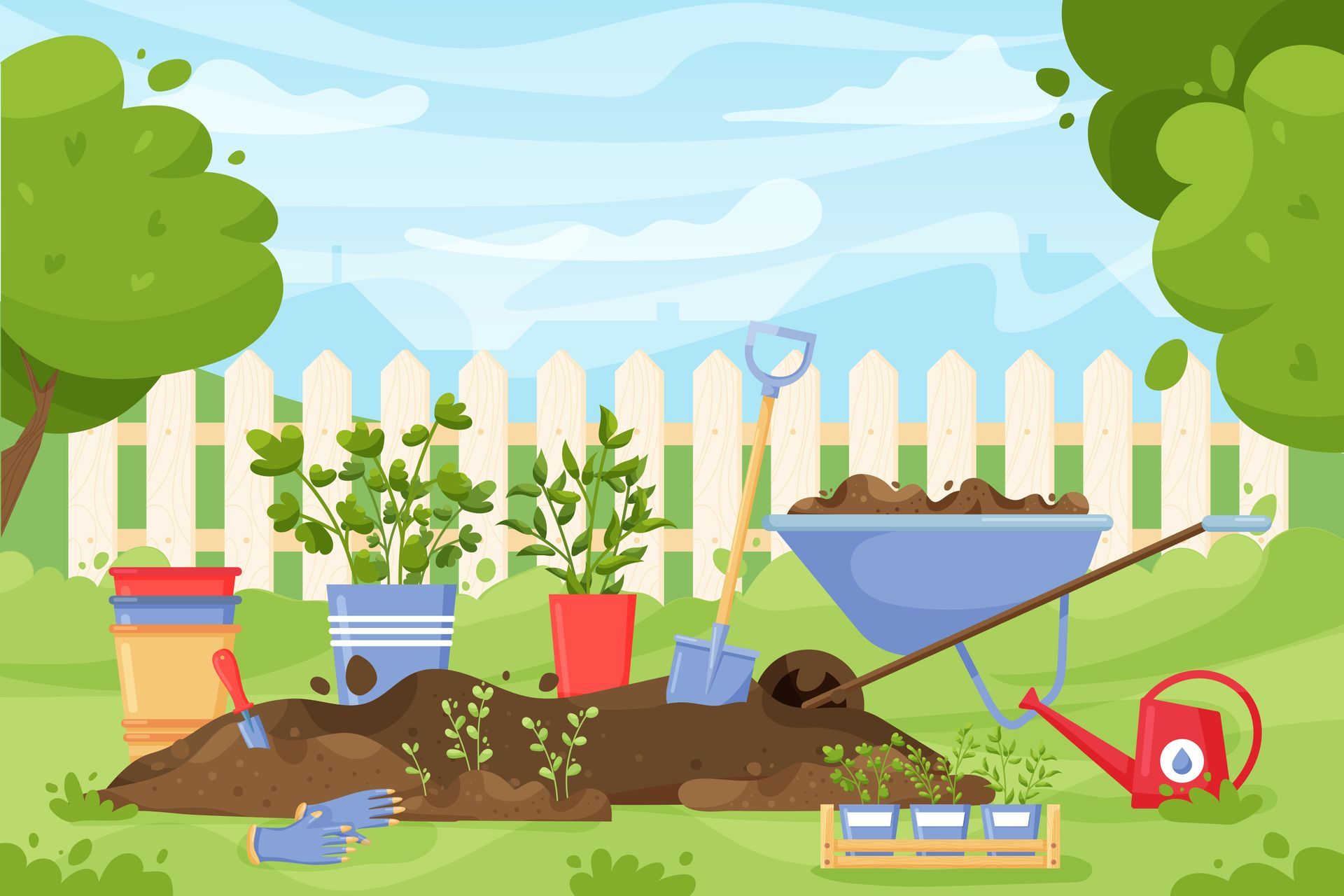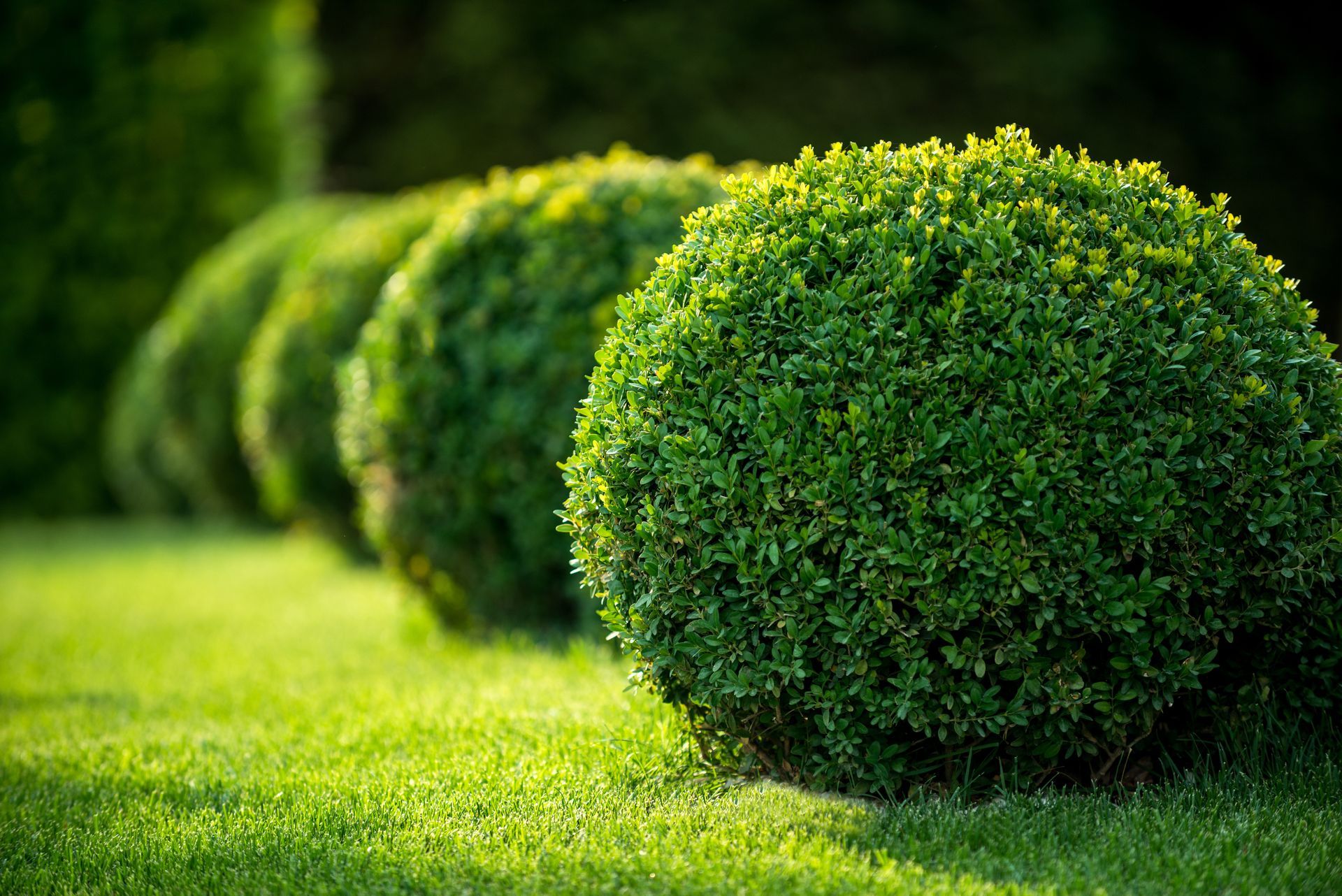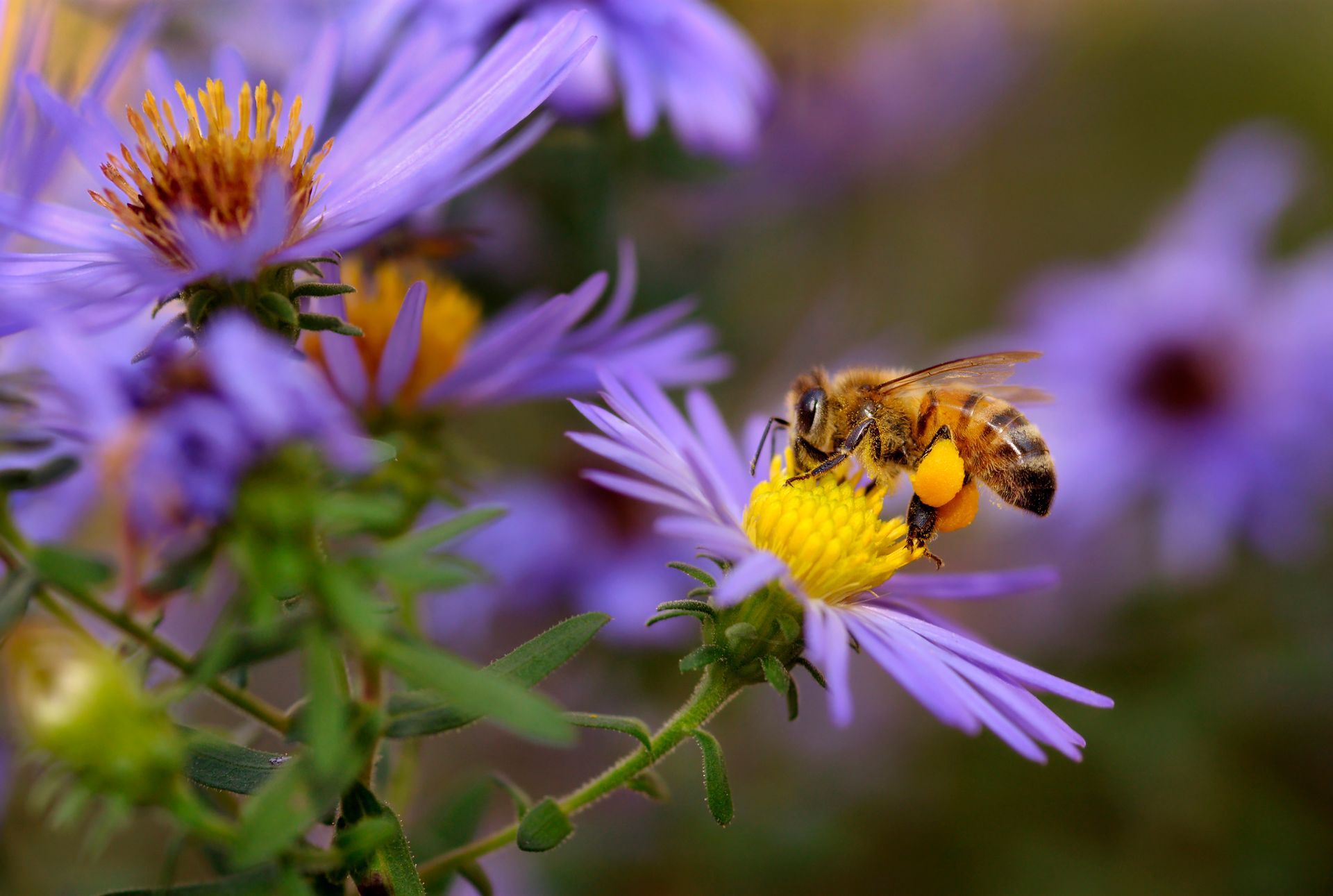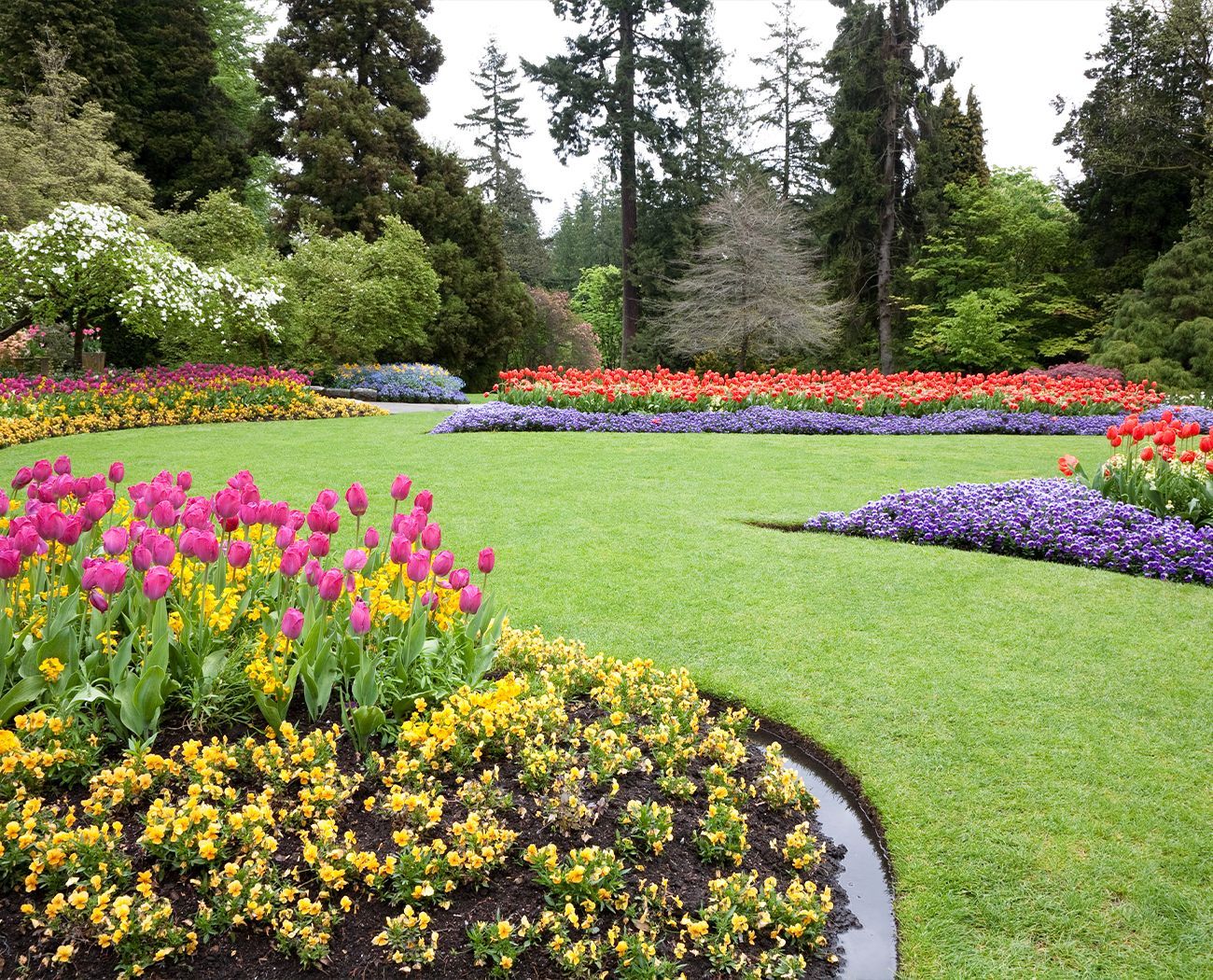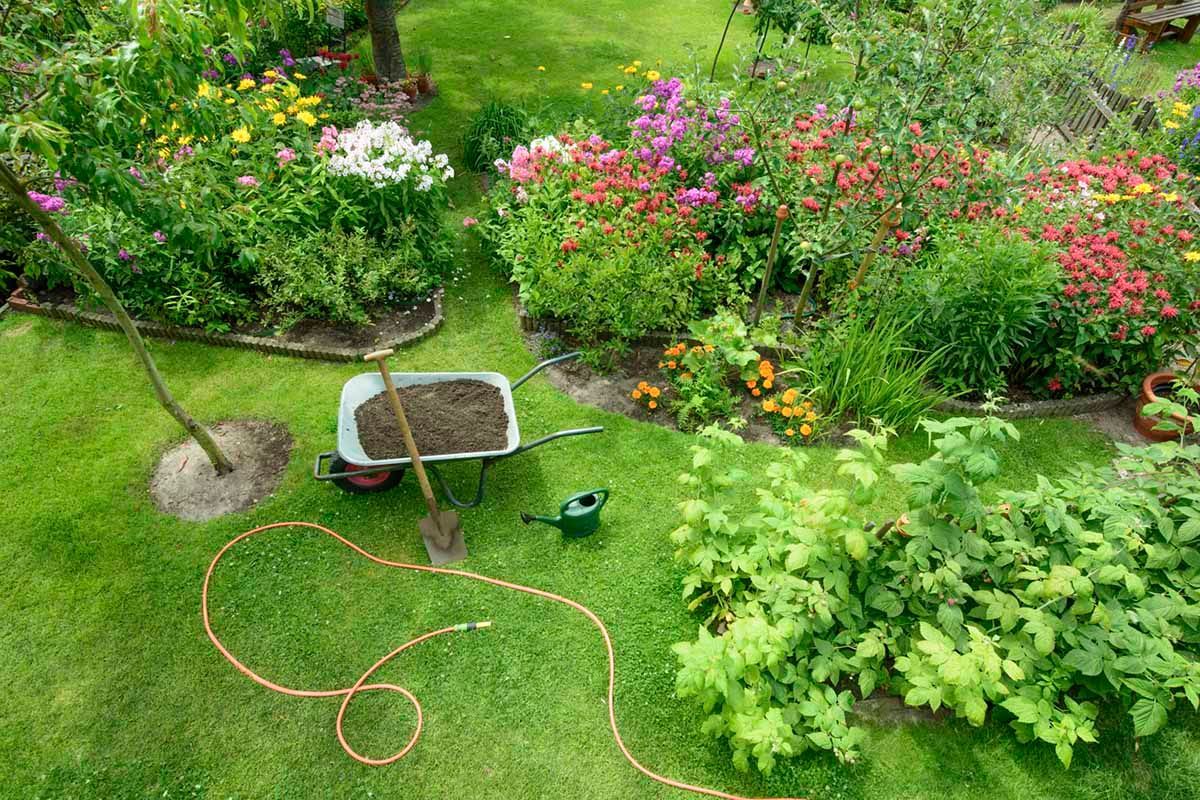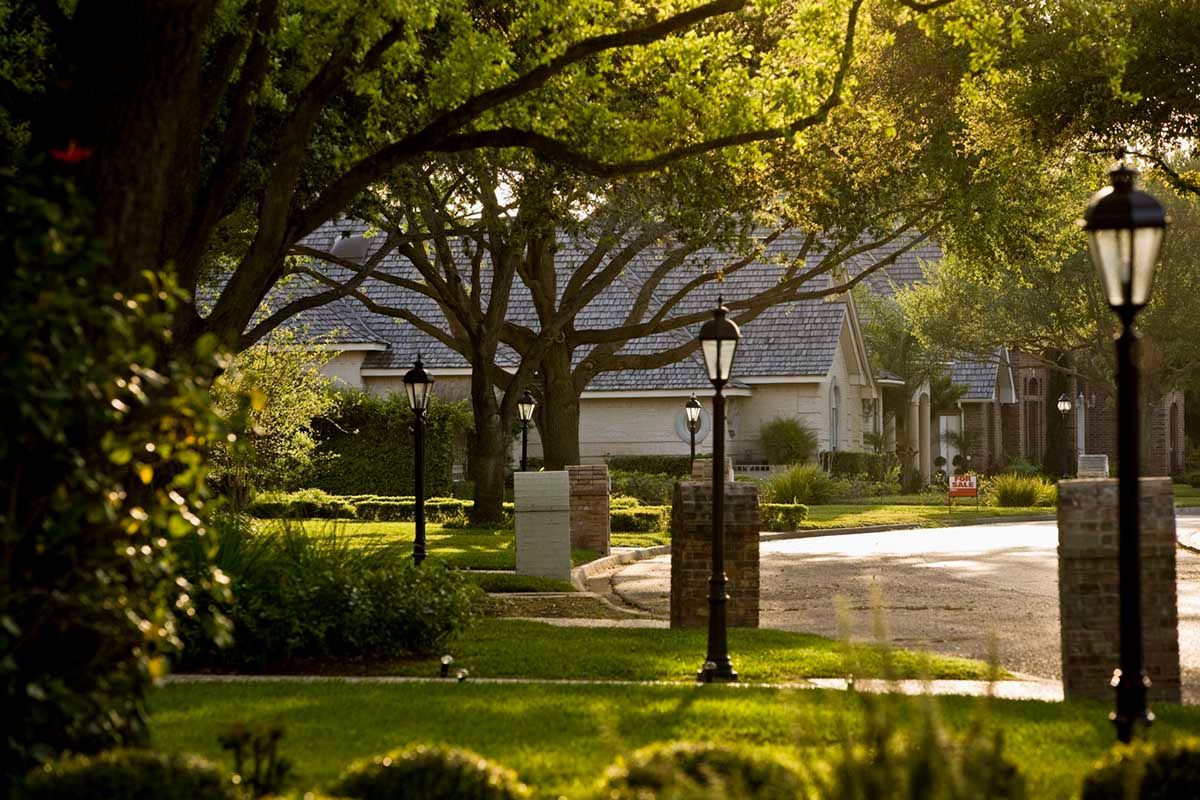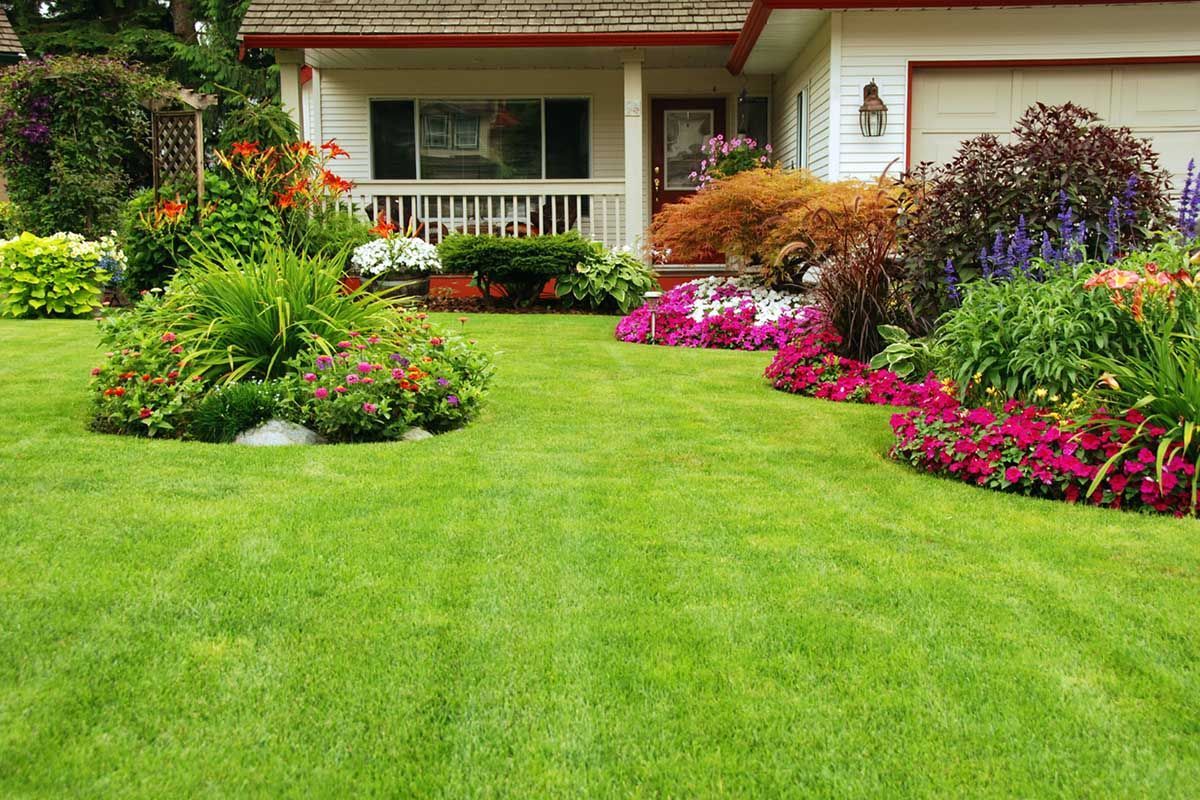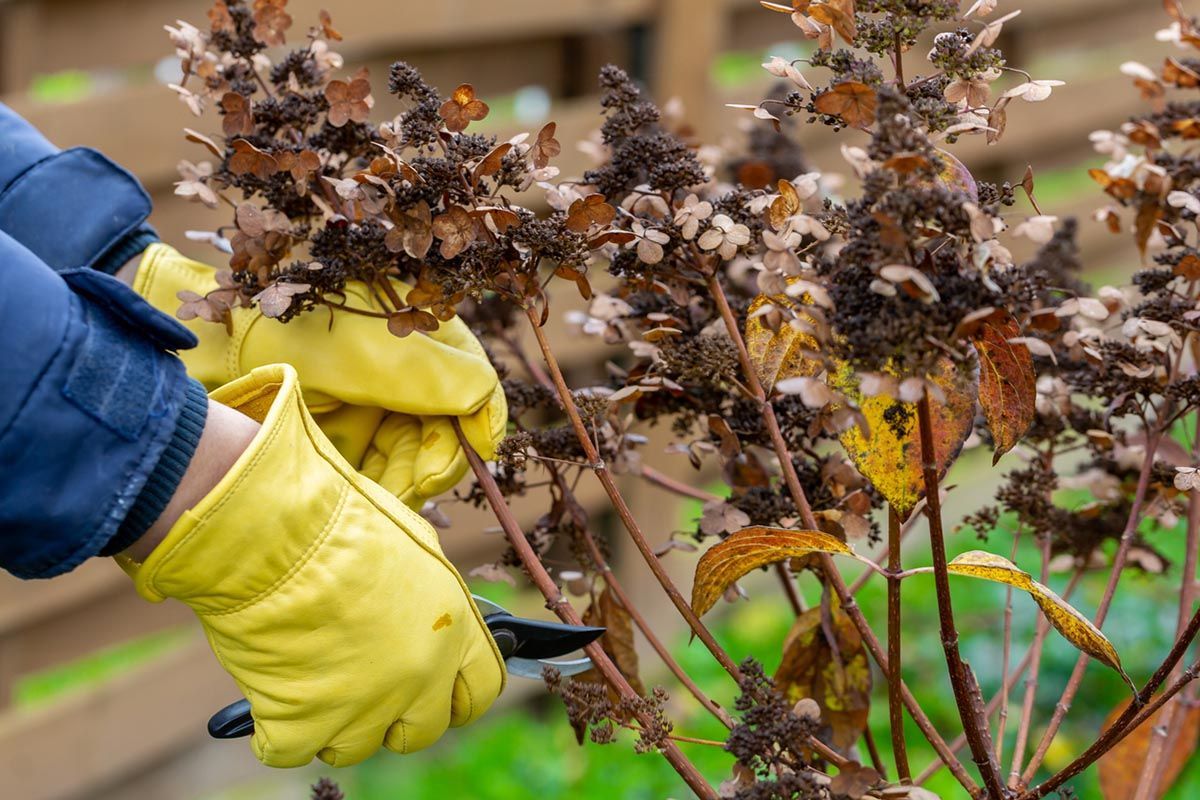Pruning, Planting, and Preparing for the Colder Months
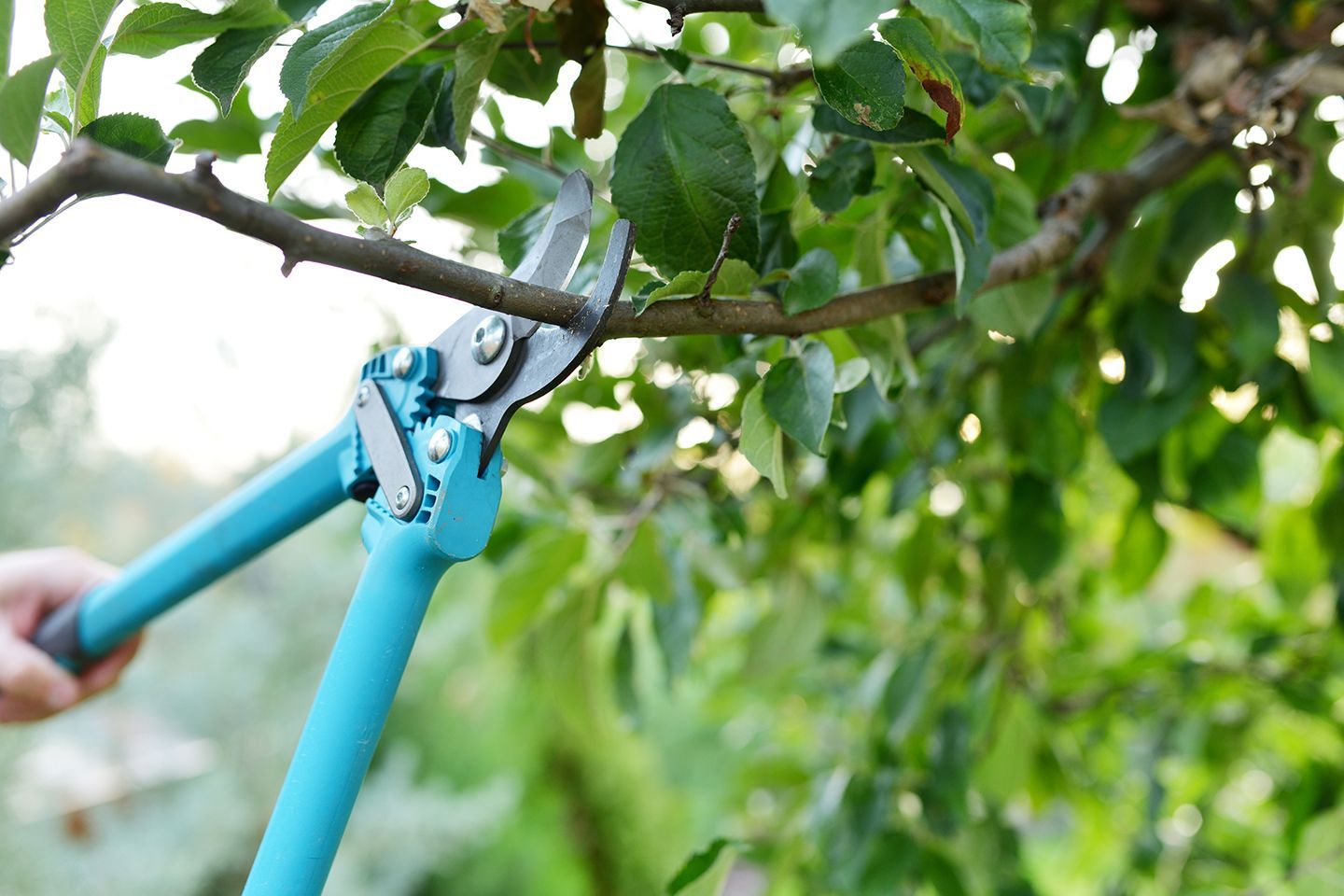
Pruning
Pruning is the practice of selectively removing branches, stems, or roots from a plant. By selectively removing branches, you can improve the overall structure, promote new growth, and prevent potential hazards such as dead limbs falling down.
There are several kinds of pruning techniques that are frequently used such as deadheading, thinning, heading back, and training. Depending on what result you are looking for, different methods may be used. By shaping the plant to your preference, you can create a multitude of desired looks and achieve some beautiful, manicured results.The optimal time for pruning in the Chattanooga area is typically from late fall to early spring. This is the time when plants are more focused on conserving energy and are less likely to “bleed” sap.
Pruning also helps to remove dead, diseased, or damaged branches, which can harbor unwanted pests and diseases while also encouraging new growth that results in denser and more vibrant plants. Healthy plants that have been pruned are more resilient and better able to withstand harsh weather conditions.
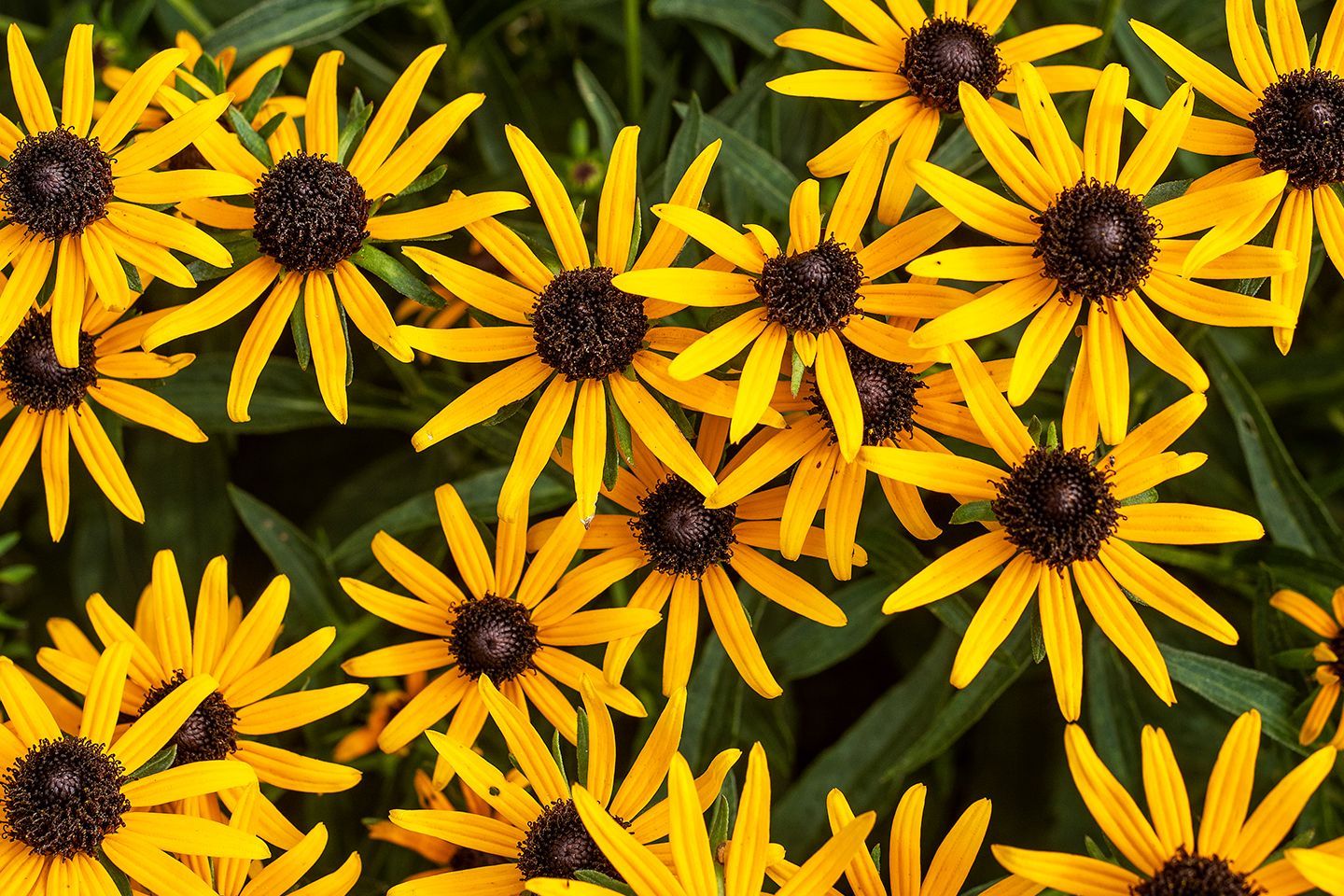
Planting
Planting in Chattanooga during cooler temperatures (along with the generous amount of rainfall we usually receive) provides optimal conditions for many kinds of new plants to establish themselves. By focusing on planting native species, you can contribute to the local ecosystem, attract beneficial pollinators, and enjoy a low-maintenance and sustainable landscape.
In the fall, consider planting native perennials like black-eyed Susans, coneflowers, tickseed, and asters. These flowers are hardy and will return year after year, adding vibrant colors and texture to your landscape. Native shrubs such as serviceberry, sweetspire, and redbud offer year-round beauty with their blooms, foliage, and berries. In addition to being beautiful, they also provide great habitats for local wildlife. For trees, consider mixing oaks, maples, and dogwoods for plentiful shade and a diverse ecosystem.
For winter, while many plants go dormant, there are several native flowers that offer blooms throughout the frigid months. Winterberry holly, witch hazel, and hellebores are all persistent plants that will bloom in a variety of different shapes and colors that are sure to compliment a winter landscape.
Additionally, give some thought to hedge planting with shrubs like laurels, as well as taller hedges featuring Emerald Greens or Green Giants. These hedges not only enhance your landscape but also offer significant benefits such as increased privacy, noise reduction, and the ability to block excess light. Incorporating these elements can create a more serene outdoor space while contributing to the overall aesthetic and ecological health of your property.
One of the best things you can do for our local ecosystem, regardless of the season, is to research and plant native species. These plants are adapted to our local conditions and support the native wildlife and pollinators. They generally also require less maintenance and are often more resistant to pests and diseases while offering a natural and timeless beauty that compliments the surrounding landscape. By choosing native species, you are contributing to a more sustainable and resilient ecosystem.
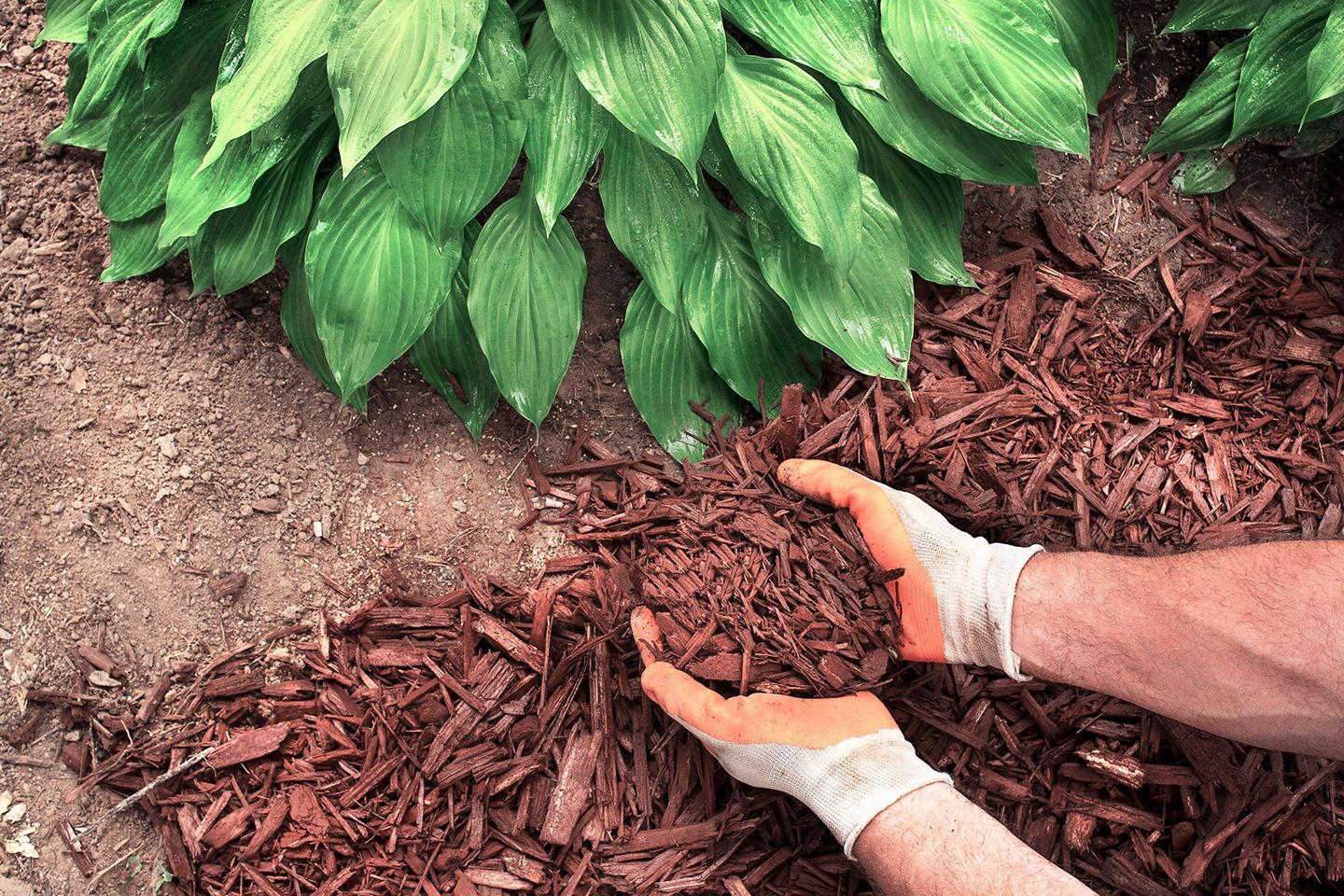
Preparing and Winterizing
In addition to planting and pruning, there are several other steps you can take to prepare your landscape for the winter months. Applying a layer of mulch around the base of your plants can help them to retain moisture, insulate their roots, and suppress any unwanted weeds. Fall is also a good time to fertilize your lawn and garden beds to provide essential nutrients for plants in the spring. Be sure when fertilizing to choose an option that is specifically formulated for the fall season.
Be sure to not neglect your watering habits during the fall as well, because it helps plants to build their reserves and withstand the winter.
It’s crucial to do this before the first hard freeze. If you have tender plants that are less likely to withstand freezing temperatures, consider covering them with frost blankets or row covers on cold nights.
Green Grounds Solutions
By following the tips and recommendations outlined in this blog post, you can ensure that your landscape is well-prepared for the upcoming colder months. Proper pruning, planting, and winterization will not only protect your plants but will also enhance the overall beauty and health of your entire landscape. Remember to prioritize native plants in your garden to support the local ecosystem as well.
At Green Grounds Solutions we pride ourselves on providing sustainable, beautiful, and quality results for all of your landscaping needs. We are experienced in pruning, planting, and preparing for the fall and winter, and we’re happy to help. Contact us today for a free quote, and let us take the time to give your landscape the attention and respect it deserves. With our help, you’ll have a landscape that thrives throughout every season for years to come.
